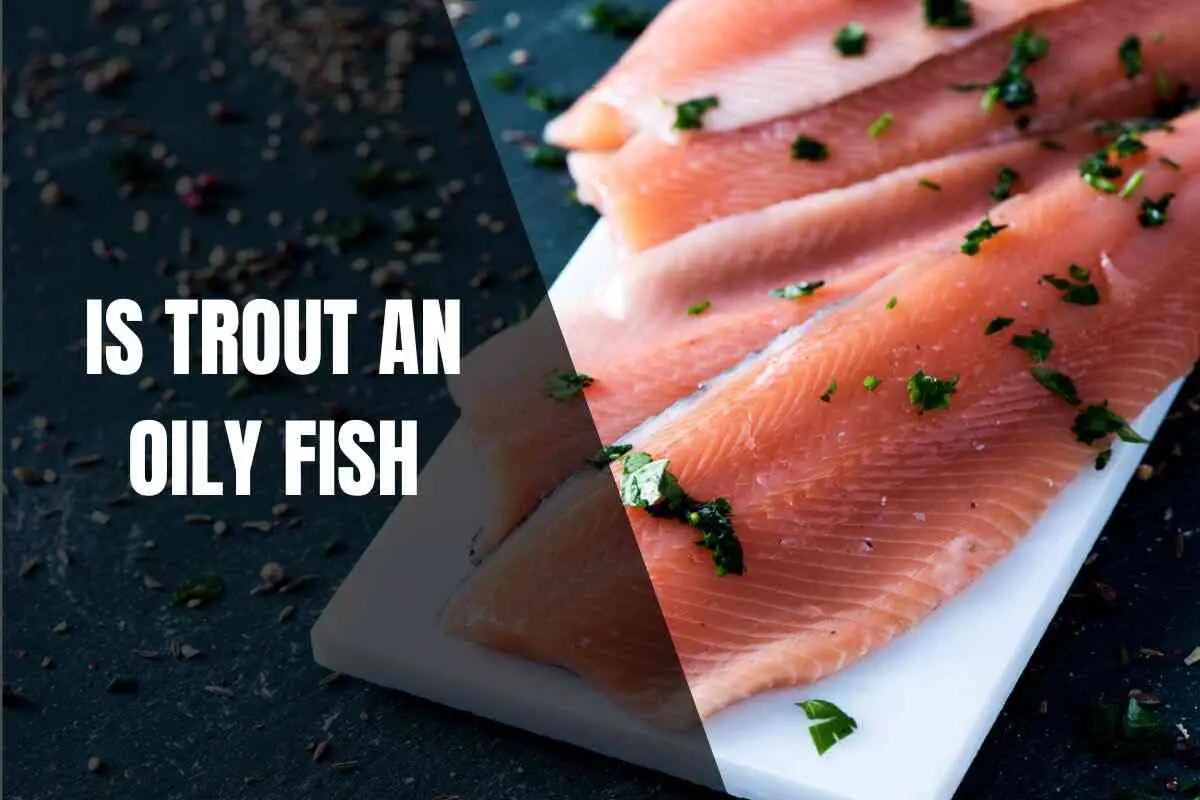Oily fish is classified as oily due to the high-fat content found throughout their body. The greasy feeling you get when touching the meat is just the fat content.
Trout is considered to be fatty and is known to contain as high as 30% fat content in the fillets. The trout fat is very healthy to eat and an excellent source of vitamins A and D and omega-3.

Is Trout A Lean or Fatty Fish?
Due to their higher oil content, oily fish are an excellent source of omega-3 fatty acids.
The most common oily fish are salmon, sardines, anchovies, mackerel, as well as herring. Trout is considered to be a close relative to the salmon and therefore is also considered to be an oily fish.
Is Trout Less Fatty Than Salmon?
Without question, trout are far less fatty than Salmon.
Typically, you will find roughly 12.3 g of fat for every 3 1/2 ounces of cooked salmon, whereas trout only has 7.2 g of fat in the same sized serving.
Is Trout Fattier Than Salmon?
While many different types of fish are healthy to eat, trout and salmon are at the top of the list. Both fish can be readily found at local supermarkets and have a higher quantity of omega-3 fatty acids.
However, the trout is not nearly as fatty as salmon because it has roughly half of the fat and oils as its cousin.
Is Trout A Healthy Fish to Eat?
When it comes to eating healthy, trout is an excellent source of many vitamins and minerals the body needs to survive.
Not only does it contain high quantities of protein, but trout also has plenty of omega-3, vitamin B12, and niacin. Rainbow trout, are considered to be the healthiest of all of the trout species, ranking just under salmon.
Trout Has A High Omega-3 Content
One of the main benefits of consuming oily fish is the high content of omega-3 fatty acids. These unsaturated fatty acids are known to help reduce inflammation as well as lower the risk of developing heart disease, arthritis, and cancer.
Trout is an excellent source of lean protein, a necessary building block for the body. Physicians around the world generally recommend an increase in the consumption of omega-3 for those with heart-related conditions.
Trout Is Low in Contaminants
Compared to many other fish types, trout have very low contaminants like mercury and polychlorinated biphenyls.
Consuming fish that are known to have higher levels of mercury and PCBs can cause kidney damage, brain damage, fatigue, and mental disorders. Because it has low levels of contaminants, trout is safer to eat than many other types of fish.
Trout Is A Good Source of Protein
All meat contains protein. But not all meat contains the same quantities of this necessary building block. While land animals like chicken, pork, and beef have high levels of protein, they cannot come close to the levels contained within a cooked fillet of rainbow trout.
The average trout contains roughly 19 g of protein for every single 3-ounce serving, and every gram of that protein has a mere 4 calories.
Trout Is Rich in Phosphorus
Next to calcium, the most abundant mineral found in trout is phosphorus. Calcium and phosphorous work together in order to keep teeth and bones healthy and strong.
In fact, 85% of the phosphorus found within the human body is located within the teeth and bones. A phosphorus-rich diet will help improve digestion and increase the body’s ability to maintain and repair soft and hard tissue.
Trout Is an Excellent Source of Vitamin B
You will also find that trout is an excellent source of the vitamin B complex. That is, every tantalizing bite of trout contains vitamin B6, vitamin B12, thiamin, as well as niacin.
These water-soluble vitamins are crucial to a cell’s metabolism and help the body to stay healthy. Thiamin is needed to help break down sugars, and niacin is used to break down complex carbohydrates.
